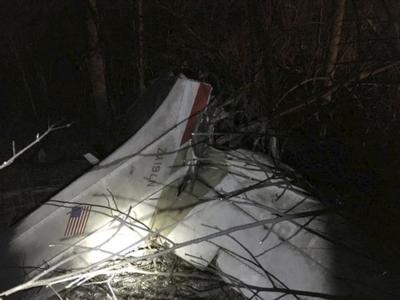Board Employee Was Fatally Injured In The Accident
The NTSB has released a preliminary report from an accident which fatally injured three people, including Paul Schuda, the director of the NTSB's training center in Ashburn, VA.

Schuda was a passenger on board the Cessna Cessna T210M airplane, N761YZ, which impacted trees and terrain following a reported loss of engine power near Oldenburg, Indiana. A postimpact fire ensued and the airplane was destroyed. The pilot and another passenger were fatally injured. The airplane was registered to N761YZ LLC and operated by the pilot as a 14 Code of Federal Regulations Part 91 personal flight. Night visual meteorological conditions prevailed. The flight was operated on an instrument flight rules flight plan and originated from the Columbus Municipal Airport (KBAK), Columbus, Indiana, about 2039. The intended destination was the Frederick Municipal Airport (KFDK), Frederick, Maryland.
The flight initially departed the Charles B Wheeler Downtown Airport (KMKC), Kansas City, Missouri, about 1657, and landed at BAK about 1927. Airport records indicated that an individual associated with N761YZ purchased fuel from the self-service pump at 2032.
Air traffic control (ATC) data indicated that the accident flight departed from runway 23 at BAK. After takeoff, the airplane turned left and proceeded on an easterly course. The controller instructed the pilot to climb and maintain 11,000 feet mean sea level (msl). At 2052:00, the airplane reached an altitude of approximately 7,450 feet msl before it began a gradual descent. At 2052:30, the pilot transmitted "mayday, mayday, mayday." He informed the controller that they were experiencing a "partial engine failure" and "needed to get down." The airplane was about 26 miles east of BAK and approximately 4 miles southwest of the Batesville Airport (HLB) at that time. The pilot inquired about diverting to HLB. The controller confirmed that HLB was the closest airport, but also informed the pilot that the airport was listed as closed. The pilot subsequently over flew HLB about 4,000 feet msl, proceeded about 2 miles north, and executed a right 270-degree turn to a west heading. The final radar data point
was recorded at 2057:28 and located about 1.5 miles northeast of the HLB runway 18 approach threshold. The altitude associated with the final data point was 1,050 feet msl.
The accident site was located in a wooded ravine about 0.65 mile northwest of the final radar data point, and about 1.44 miles north of the HLB runway 18 approach threshold, at an approximate elevation of 855 feet. The main wreckage came to rest about 202 feet northeast (316 degrees) from the initial tree strike. The main wreckage consisted of the fuselage, engine and right wing. The right-wing tip was separated and located in a tree about 35 feet above ground level near the initial tree strike. Fragments from the right aileron and right-wing flap were located on the ground near the initial tree strike. The left wing was separated and located about 60 feet from the main wreckage. The empennage and propeller were separated and located adjacent to each other, about 41 feet from the main wreckage.
The fuselage and right wing were damaged by the postimpact fire. The left wing and empennage exhibited sooting due to the fire. The right-wing tip, right aileron, and right flap fragments did not exhibit any fire damage or sooting. All flight control surfaces were present at the accident site. No anomalies with respect to a preimpact malfunction of the flight control system were observed. The engine remained attached to the firewall and the aft portion of the engine sustained fire damage. The propeller had separated at the engine crankshaft flange. A teardown examination of the engine revealed damage to the No. 4 cylinder and piston. Those components have been sent to the NTSB materials laboratory for further examination.
Federal Aviation Administration Notices to Airmen (NOTAM) data indicated that HLB was closed from December 6, 2017, until March 5, 2018. A representative of the airport reported that, because the airport was closed, no runway lighting was available.
(Source: NTSB. Image provided by the Indiana State Police)
 Airbus Racer Helicopter Demonstrator First Flight Part of Clean Sky 2 Initiative
Airbus Racer Helicopter Demonstrator First Flight Part of Clean Sky 2 Initiative Diamond's Electric DA40 Finds Fans at Dübendorf
Diamond's Electric DA40 Finds Fans at Dübendorf ANN's Daily Aero-Term (04.23.24): Line Up And Wait (LUAW)
ANN's Daily Aero-Term (04.23.24): Line Up And Wait (LUAW) NTSB Final Report: Extra Flugzeugbau GMBH EA300/L
NTSB Final Report: Extra Flugzeugbau GMBH EA300/L Classic Aero-TV: 'Never Give Up' - Advice From Two of FedEx's Female Captains
Classic Aero-TV: 'Never Give Up' - Advice From Two of FedEx's Female Captains



